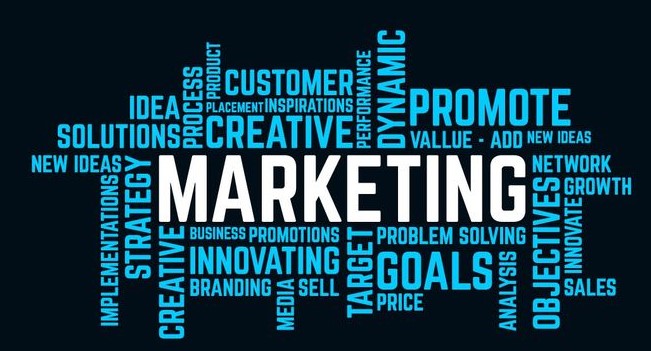Personalization Strategies are central to modern digital marketing and can significantly enhance customer experiences by tailoring interactions and content to individual preferences and behaviors. By building personalization into a custom marketing framework, businesses can create more meaningful, relevant, and engaging experiences that drive customer loyalty, conversions, and satisfaction. Here’s how to effectively incorporate personalization:
1. Develop Deep Customer Insights
- Data Collection and Segmentation: Use data from various touchpoints (e.g., website activity, purchase history, email interactions, social media engagement) to understand customer behaviors, preferences, and demographics.
- Create Detailed Customer Personas: Segment your audience into distinct personas based on common characteristics such as age, interests, buying behaviors, and pain points.
- Use Real-Time Data: Integrate real-time data streams from customer interactions to build a dynamic understanding of customer needs and preferences.
2. Build a Centralized Customer Data Platform (CDP)
- Consolidate Data Sources: Combine data from CRM, marketing automation platforms, website analytics, and other sources to create a unified customer profile.
- Cross-Channel View of the Customer: Ensure your data platform provides a single, comprehensive view of each customer’s journey across channels (e.g., email, social, web).
3. Personalize Content and Messaging
- Dynamic Content: Use dynamic content that changes based on customer attributes (e.g., location, industry, past purchases) in emails, landing pages, and website content.
- Example: An e-commerce site can display relevant product recommendations based on the customer’s browsing history.
- Behavioral Targeting: Personalize messages based on user behavior, such as sending follow-up emails for abandoned carts or recommending content based on previous articles read.
- Custom Landing Pages: Create personalized landing pages tailored to specific audiences, reflecting their interests and stage in the customer journey.
4. Personalize Email Marketing Campaigns
- Segmentation and Targeting: Divide your email list into segments (e.g., based on location, purchase history, engagement level) to send more targeted campaigns.
- Personalized Subject Lines and Content: Use recipient names, tailored offers, or messages that reflect user preferences.
- Triggered Emails: Set up automated triggers for sending personalized emails based on customer actions (e.g., a welcome email upon sign-up, birthday discounts, or follow-ups).
5. Leverage AI and Machine Learning for Personalization
- Predictive Analytics: Use machine learning algorithms to predict customer needs and preferences, and tailor recommendations accordingly.
- Chatbots and Conversational AI: Deploy AI-powered chatbots that provide personalized responses based on user queries, previous interactions, and contextual information.
- Recommendation Engines: Integrate AI-driven recommendation engines that suggest products, content, or services based on past user behavior.
6. Personalize Across Multiple Channels
- Omnichannel Personalization: Ensure consistency in personalized experiences across channels such as email, social media, mobile apps, and in-store interactions.
- Cross-Channel Campaigns: Use data to create connected campaigns that adapt content for each touchpoint while maintaining consistent messaging.
- Example: A customer who views a product online can receive personalized ads on social media or tailored email reminders.
7. Personalize the Customer Journey
- Tailored Customer Journeys: Map out the customer journey and identify opportunities to deliver personalized messages, content, and offers at every stage (awareness, consideration, decision, post-purchase).
- Adaptive Content: Adjust content based on where the customer is in the journey. New leads may see introductory content, while returning customers might see exclusive loyalty offers.
8. Personalization in Paid Advertising
- Audience Segmentation: Use custom audiences and retargeting in paid ad campaigns (Google Ads, social media ads) to tailor ads to specific customer segments.
- Personalized Ad Copy: Align ad copy, visuals, and offers with the interests and demographics of targeted audiences.
- Geo-Targeting: Personalize ads based on a customer’s location to make offers more relevant.
9. Leverage Social Media Personalization
- Social Listening: Monitor conversations, brand mentions, and trends on social media to understand what your audience cares about and tailor responses and content accordingly.
- Personalized Messaging: Use social media data to create personalized messages and content that engage users in meaningful conversations.
10. Optimize Customer Support and Experience
- Tailored Support Interactions: Use CRM data to offer personalized customer support, ensuring agents understand customer history and preferences.
- Proactive Outreach: Reach out proactively with personalized recommendations, tips, or solutions based on customer needs and behaviors.
11. Personalize Loyalty and Rewards Programs
- Custom Rewards: Offer rewards or incentives tailored to customer interests and behaviors (e.g., personalized discounts based on purchase history).
- Exclusive Offers: Create personalized offers or discounts for loyal customers to increase engagement and retention.
12. Measure Personalization Effectiveness
- Track Engagement Metrics: Monitor metrics such as click-through rates (CTR), conversion rates, and time on site to gauge the effectiveness of personalization strategies.
- Customer Feedback: Gather direct feedback from customers through surveys or user reviews to understand their perception of personalization efforts.
- A/B Testing: Test personalized versus non-personalized content to determine what resonates best with your audience.
Example of Building Personalization into a Custom Marketing Framework
- Data Collection: Gather customer data from multiple touchpoints and centralize it within a CRM or customer data platform.
- Segmentation: Divide customers into meaningful segments based on behavior, demographics, or preferences.
- Content and Campaign Creation: Develop personalized content and messages for each segment.
- Automation: Use marketing automation tools to trigger personalized messages and campaigns at scale.
- Omnichannel Approach: Ensure personalized experiences across all marketing channels.
- Continuous Optimization: Track performance, gather customer feedback, and refine personalization strategies accordingly.
Benefits of Personalization in a Marketing Framework
- Improved Customer Engagement: Personalized messages resonate more with customers, increasing engagement rates.
- Higher Conversion Rates: Tailored offers and recommendations lead to higher sales and conversions.
- Enhanced Customer Experience: Personalized experiences make customers feel valued, improving satisfaction and loyalty.
- Increased ROI: By targeting specific segments with relevant content, businesses can maximize the effectiveness of their marketing spend.
- Stronger Brand Loyalty: Personalized interactions foster deeper connections, turning customers into brand advocates.
By embedding personalization into every aspect of a custom marketing framework, businesses can create meaningful, one-to-one customer experiences that drive loyalty, engagement, and long-term success









